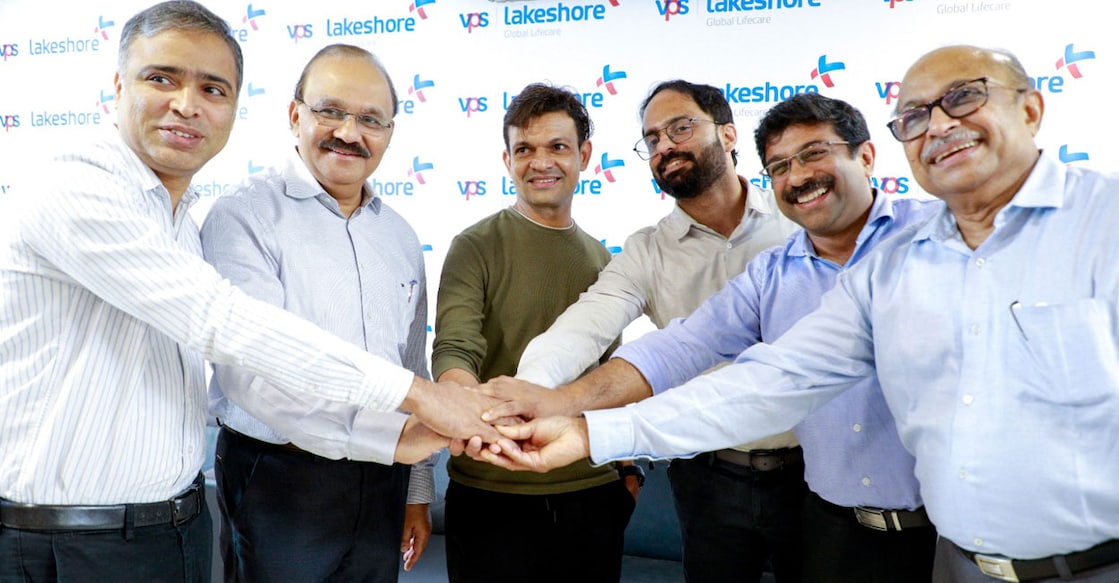After 14 surgeries in 22 years, Kannur man gets relief with rare simultaneous liver-kidney transplants

Mail This Article
Kochi: Mohan Kambrath is 47, and in the past 22 years, he had to undergo 14 surgeries as he battled a rare condition which left him with the burden of recurring kidney stones. After all those painful years, the Kannur native looks relieved now after a medical team at a Kochi hospital found a solution to suffering with a rare 15th surgery.
It has been five months since he underwent a simultaneous liver and kidney transplant at VPS Lakeshore Hospital and he says it feels like “a new life” for him. A native of Kuttiyattoor in Kannur district, Mohan is all set to rejoin his work as an office assistant-cum-driver in a Dubai company.
The doctors at Lakeshore decided to go for the combined surgery after diagnosing that Kambrath was suffering from Primary Hyperoxaluria, a rare genetic disorder that leads to recurrent kidney stones and damage of other vital organs.
Primary Hyperoxaluria is a rare genetic disorder affecting only 1 in 10 million (one crore) people. Affected individuals lack a specific enzyme in their liver that normally prevents the accumulation of oxalate in the body. Excessive oxalate can lead to the formation of kidney stones and damage of other vital organs like heart and eyes.
"It's my new life, as I have spent most of my time in the hospital for surgeries and my sleep was often disturbed by bony pain because of the accumulation of oxalate crystals in the bone. I had my first stone removal surgery at Calicut Medical College when I was 24 years old. After that, I underwent eight more surgeries in Dubai and six done at a major private hospital in Kozhikode. Now, I am completely fine and will rejoin work in Dubai within a few weeks, as my doctor has given me a fitness certificate," Mohan said as he met media at the hospital on Thursday along with the team of doctors who treated him, and S K Abdulla, managing director of the hospital.
He was referred to Lakeshore Hospital with end-stage renal disease and severe body pain a few months ago. "Upon investigation, we concluded that only a combined liver and kidney transplantation could save his life, as the stones were accumulating in his vital organs. Following this, we formed a multidisciplinary team from Urology, Nephrology, and Liver Transplantation to perform living donor simultaneous liver kidney (SLK) transplantation. The surgery was carried out on two donors and one recipient at the same time in three different operation theatres. This is a rare and challenging procedure but offers both immunological and financial benefits to the patient" said Dr Fadl H Veerankutty, senior consultant and chief, Department of Liver Transplantation.
“Contrary to the sequential liver-kidney transplant, by doing liver and kidney transplant at a time, we can save the patients from the cumbersome dialysis while they await for a kidney transplant. Dialysis at this period when the patient is on immunosuppressive medication is associated with high risk of infection and of course add to the cost of the surgery,” added Dr Abi Abraham, director - nephrology and renal transplant services.
Dr George P Abraham, chief renal transplant surgery emphasised that a simultaneous transplantation provides significant advantages for patients, including a markedly lower risk of rejection of kidney graft compared to kidney transplantation alone. This technique allows for a more streamlined procedure, which can improve the overall success of the transplant. By minimising the risk of rejection, patients experience better long-term outcomes and enhanced recovery.
Mohan, who received financial aid from his friends and colleagues, was treated by a team of doctors, including Dr Datson George P, senior consultant, Urology and Dr Jithin S Kumar, consultant, Nephrology.

